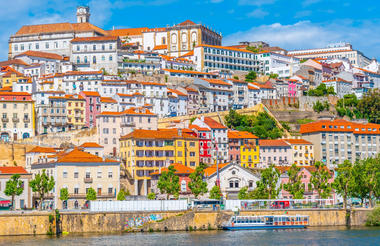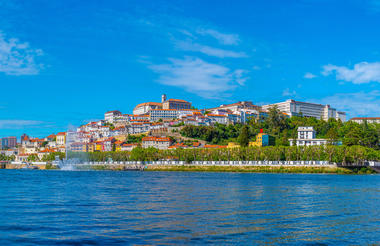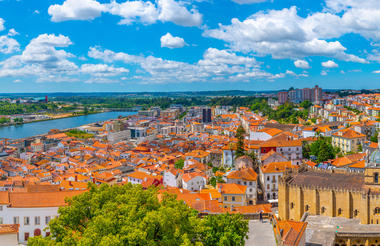Located in northern Portugal along the Douro River estuary, the old sailing port of Porto is a World Heritage Site and the second-largest city in the country. While retaining the timeless charm of a small town, Porto also has many of the modern advantages of a metropolis. Browse the expansive art collection at the Soares dos Reis National Museum, view the ornate interior of the Church of Sao Francisco, and explore the medieval maze of stairways and terraces in the old quarter of Ribeira. Don’t miss the chance to visit the Vila Nova de Gaia area to sample some of Porto’s famous Port wine. Other popular attractions include the 12th-century Porto Cathedral, Clerigos Tower and the Harry-Potteresque Livraria Lello bookshop, showcasing some magnificent neo-gothic architecture.



Set roughly halfway between Lisbon and Porto, Coimbra is a vibrant, historical university town that flanks both sides of the Mondego River, with the old quarter on one side and the modern district on the other. A walk down the ancient town’s main street will take you past shops and cafes, culminating in an atmospheric plaza. The square is crowned by the 12th-century Santa Cruz Monastery, a majestic building of ivory-coloured stone with an elaborate arched entrance and an exquisitely detailed interior decorated with blue tiles. The University of Coimbra, dating to 1537, is Europe’s oldest university and the town’s main architectural attraction, while the Quinta das Lagrimas estate, with its forests, bamboo groves, poppy fields, and manicured gardens, provides a tranquil oasis just outside the city.



The beautiful city of Lisbon lies draped across a string of seven hills on the western Iberian Peninsula and is the westernmost and oldest city in western Europe. Its long and tumultuous history has resulted in an aesthetic characterised by a haphazard combination of old and new; however, the aesthetic chaos of Lisbon only adds to its appeal and its undeniable charm. Bright yellow centenarian trams rattle their way up steep, tree-lined, cobbled streets; ornate ironwork balconies overrun with bougainvillaea sit above elegant outdoor cafes housed in ancient whitewashed, red-roofed stone houses; and a flurry of detailed mosaics decorate the sidewalks. Ancient statues adorn grand squares and hidden gardens. A diverse culinary scene, a plethora of fascinating museums, and numerous castles make it easy to see why Lisbon is one of Europe’s most misunderstood and underrated cities.







